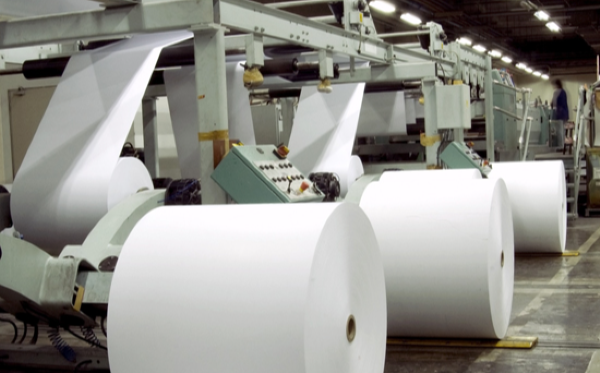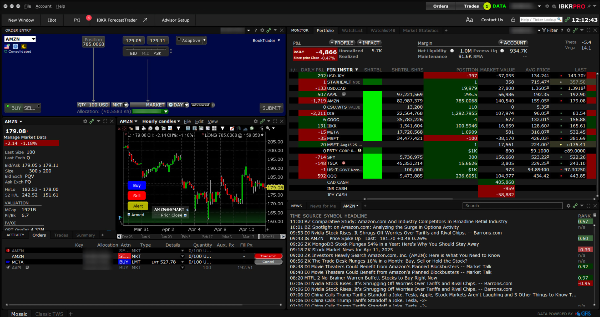Key Takeaways: Categories of Timber Stocks
These are the different categories of stocks in the timber industry. Each category offers distinct investment opportunities, with factors such as sustainability practices, raw material costs, and regulatory considerations shaping market performance.
1. Timberland Investment Trusts
- Timberland Investment Management Organizations (TIMOs)
- Timber Real Estate Investment Trusts (REITs)
2. Logging and Harvesting Companies
- Companies involved in timber harvesting and raw material processing
- Key players in global forestry and logging
3. Lumber and Wood Product Manufacturers
- Plywood and Engineered Wood Products
- Furniture Components and Structural Materials
4. Pulp and Paper Companies
- Companies specializing in paper production and packaging solutions
- Market leaders in pulp-based products
5. Biomass and Renewable Timber Energy Stocks
- Firms using timber for biomass energy and biofuels
- Companies focused on carbon-neutral energy solutions
The timber industry plays a crucial role in global markets, supplying essential materials for construction, paper production, and furniture manufacturing. Timber stocks are categorized into several segments, including forestry and logging companies, lumber and wood product manufacturers, and timberland investment firms.
These stocks offer investors exposure to natural resource assets, with some companies focusing on sustainable forestry practices and others specializing in processed wood products. Timber stocks can serve as a hedge against inflation and provide diversification within broader investment portfolios, making them attractive for long-term growth and income generation.
Understanding the Timber Industry
The timber industry operates through a complex supply chain, beginning with forestry management and logging, followed by processing into lumber, plywood, and other wood-based products. Distribution channels then deliver these materials to construction firms, furniture manufacturers, and paper producers. This interconnected system ensures a steady flow of timber resources to meet global demand while balancing economic and environmental considerations.
Several factors drive the timber industry, including the rising demand for construction materials, paper products, and biofuels. The construction sector relies heavily on timber for framing, flooring, and structural components, while the paper industry depends on wood pulp for packaging and printing materials. Additionally, biofuels derived from timber waste contribute to renewable energy solutions, further expanding the industry's market potential.
Sustainable forestry practices play a crucial role in maintaining ecological balance and ensuring long-term timber availability. Certification programs like FSC and PEFC promote responsible logging, while government regulations enforce reforestation and biodiversity conservation. These measures help mitigate deforestation risks and support a more sustainable timber industry, aligning with global environmental goals.
Major Categories of Timber Stocks
Timber stock investments fall into several key categories, each offering distinct advantages for investors. Timberland Real Estate Investment Trusts (REITs) provide exposure to large-scale forestry operations, generating revenue through timber sales and land leases. Timber Investment Management Organizations (TIMOs) manage timber assets) on behalf of institutional investors, focusing on sustainable forestry and long-term growth.
Publicly traded timber companies, such as lumber producers and paper manufacturers, offer direct investment opportunities in the processing and distribution of wood products. These categories allow investors to diversify their portfolios while benefiting from timber’s role as a hedge against inflation and economic downturns.
Timberland Investment Trusts (TIMOs and REITs)
Timberland Investment Management Organizations (TIMOs) are specialized firms that manage timber assets on behalf of institutional investors, such as pension funds and endowments. TIMOs identify, acquire, and oversee timberland investments, ensuring sustainable forestry practices while optimizing returns. These organizations operate through private partnerships or commingled funds, allowing investors to gain exposure to timber assets without direct ownership responsibilities. TIMOs play a crucial role in maintaining ecological balance while generating long-term financial gains.
Timber Real Estate Investment Trusts (REITs) offer a publicly traded alternative for investing in timberland. Unlike TIMOs, REITs own and manage income-generating timber properties, providing investors with liquidity and dividend income. Leading timberland REITs include Weyerhaeuser, Rayonier, and PotlatchDeltic, each specializing in sustainable forestry and timber product distribution. These REITs benefit from timber’s ability to appreciate over time, making them attractive for long-term portfolio diversification.
Investing in timberland REITs presents both advantages and challenges. On the positive side, REITs provide steady income through dividends, inflation protection, and exposure to a tangible asset class. However, they are subject to market fluctuations and regulatory constraints, which can impact profitability. TIMOs, on the other hand, offer direct timberland ownership benefits but require longer investment horizons and higher capital commitments. Understanding these trade-offs helps investors align their timberland investments with broader financial goals.
Logging and Harvesting Companies
Logging and harvesting companies play a crucial role in the timber industry by managing forest resources, cutting and processing trees, and distributing raw materials for construction, paper production, and furniture manufacturing. These companies utilize advanced machinery, such as skidders and harvesters, to optimize efficiency while minimizing environmental impact. Sustainable logging practices, including selective harvesting and reforestation efforts, help balance economic growth with ecological preservation, ensuring long-term viability for the industry.
Several key players dominate the global logging industry, including Interfor, Tigercat Industries, and Rayonier. Interfor is one of North America’s largest forest product companies, specializing in high-quality lumber production. Tigercat Industries focuses on manufacturing specialized logging equipment, enhancing operational efficiency for timber harvesting firms. Rayonier, a major timberland REIT, manages vast forest assets while prioritizing sustainable forestry practices. These companies contribute significantly to the global timber supply chain, supporting industries reliant on wood-based materials.
Environmental regulations heavily influence logging companies, shaping operational strategies and sustainability efforts. Policies such as the Forest Stewardship Council (FSC) certification and government-imposed logging restrictions ensure responsible forest management. Financial metrics used to assess logging companies include revenue growth, timberland asset valuation, and return on investment (ROI). Investors often analyze these factors alongside sustainability commitments to gauge long-term profitability and industry resilience.
Lumber and Wood Product Manufacturers
Lumber and wood product manufacturers play a vital role in the timber value chain by converting raw timber into usable materials for construction, furniture, and packaging industries. These manufacturers process logs into lumber, plywood, and engineered wood products, ensuring a steady supply for residential and commercial applications. Their operations contribute to economic growth by supporting infrastructure development and sustainable forestry practices.
The industry produces a wide range of wood products, including plywood, medium-density fiberboard (MDF), oriented strand board (OSB), and high-quality furniture components. Engineered wood products, such as cross-laminated timber (CLT) and laminated veneer lumber (LVL), offer enhanced durability and sustainability, making them popular choices for modern construction. These materials provide cost-effective alternatives to traditional solid wood while maintaining structural integrity.
Several publicly traded U.S. companies dominate the lumber and wood product manufacturing sector, including Weyerhaeuser (WY), Boise Cascade (BCC), and Louisiana-Pacific Corporation (LPX). Profitability in this industry is influenced by raw material costs, housing market trends, and environmental regulations. Rising demand for sustainable building materials and fluctuations in timber prices impact revenue streams, making market positioning and operational efficiency critical for long-term success..
Pulp and Paper Companies
Timber plays a crucial role in the pulp and paper industry, serving as the primary raw material for paper production and packaging solutions. Wood fibers are processed into pulp, which is then used to manufacture various paper products, including office paper, tissue, and cardboard packaging. The industry relies on sustainable forestry practices to ensure a steady supply of timber while minimizing environmental impact. As global demand for paper-based packaging grows due to e-commerce expansion and eco-friendly alternatives to plastic, timber remains a vital resource for paper manufacturers.
Several leading companies dominate the pulp and paper segment, including International Paper (IP), WestRock (WRK), and Domtar Corporation. International Paper is one of the largest producers of packaging and paper products, while WestRock specializes in sustainable packaging solutions. Domtar focuses on pulp production and personal care products, contributing to the industry's diverse offerings. Market trends influencing demand include the shift toward biodegradable packaging, digitalization reducing traditional paper consumption, and supply chain disruptions affecting raw material availability.
Sustainability concerns have significantly impacted paper manufacturers, prompting investments in responsible forestry and recycling initiatives. Companies are adopting certifications such as the Forest Stewardship Council (FSC) to ensure ethical sourcing of timber. Additionally, rising wood costs and environmental regulations are shaping industry strategies, with firms exploring alternative fibers and energy-efficient production methods. Publicly traded companies like International Paper and WestRock are leading efforts to balance profitability with sustainability, ensuring long-term viability in a rapidly evolving market.
Biomass and Renewable Timber Energy Stocks
Biomass and renewable timber energy stocks represent a growing sector within sustainable investments, leveraging timber resources for biofuels and carbon-neutral energy solutions. Companies in this space convert wood waste, forestry byproducts, and agricultural residues into biomass energy, which can be used for electricity generation and heating. This industry plays a crucial role in reducing reliance on fossil fuels while promoting sustainable forestry practices. As global energy markets shift toward renewables, timber-based biomass solutions are gaining traction among investors seeking environmentally responsible opportunities.
Several notable players dominate the biomass energy sector, including Enviva Partners (EVA), Renewable Energy Group (REGI), and Deltic Timber Corp. (DEL). Enviva Partners specializes in producing wood pellets for biomass energy, supplying power plants committed to reducing carbon emissions. Renewable Energy Group focuses on biofuels derived from organic materials, contributing to cleaner transportation solutions. Deltic Timber Corp. integrates sustainable forestry with biomass production, offering diversified investment opportunities. These companies provide exposure to the expanding market for renewable timber energy, aligning with global sustainability goals.
Government policies play a significant role in supporting biomass and renewable timber energy investments. Incentives such as tax credits, renewable energy subsidies, and carbon offset programs encourage companies to adopt sustainable practices. The U.S. Department of Energy and the Environmental Protection Agency (EPA) promote biomass initiatives through funding and regulatory frameworks, ensuring compliance with environmental standards. Investors looking to capitalize on this sector should monitor policy developments and emerging technologies that enhance biomass efficiency.
Conclusion
Timber stocks encompass a diverse range of investment opportunities, from timberland REITs and logging companies to pulp, paper, and biomass energy firms. Each sector plays a vital role in global markets, contributing to construction, packaging, and renewable energy solutions. Investors can leverage timber assets as a hedge against inflation and a sustainable avenue for long-term growth. As industry trends shift toward eco-friendly practices and regulatory changes, understanding the nuances of each category remains essential for making informed investment decisions.






























Key Takeaways: Categories of Timber Stocks
These are the different categories of stocks in the timber industry. Each category offers distinct investment opportunities, with factors such as sustainability practices, raw material costs, and regulatory considerations shaping market performance.
1. Timberland Investment Trusts
2. Logging and Harvesting Companies
3. Lumber and Wood Product Manufacturers
4. Pulp and Paper Companies
5. Biomass and Renewable Timber Energy Stocks
The timber industry plays a crucial role in global markets, supplying essential materials for construction, paper production, and furniture manufacturing. Timber stocks are categorized into several segments, including forestry and logging companies, lumber and wood product manufacturers, and timberland investment firms.
These stocks offer investors exposure to natural resource assets, with some companies focusing on sustainable forestry practices and others specializing in processed wood products. Timber stocks can serve as a hedge against inflation and provide diversification within broader investment portfolios, making them attractive for long-term growth and income generation.
Understanding the Timber Industry
The timber industry operates through a complex supply chain, beginning with forestry management and logging, followed by processing into lumber, plywood, and other wood-based products. Distribution channels then deliver these materials to construction firms, furniture manufacturers, and paper producers. This interconnected system ensures a steady flow of timber resources to meet global demand while balancing economic and environmental considerations.
Several factors drive the timber industry, including the rising demand for construction materials, paper products, and biofuels. The construction sector relies heavily on timber for framing, flooring, and structural components, while the paper industry depends on wood pulp for packaging and printing materials. Additionally, biofuels derived from timber waste contribute to renewable energy solutions, further expanding the industry's market potential.
Sustainable forestry practices play a crucial role in maintaining ecological balance and ensuring long-term timber availability. Certification programs like FSC and PEFC promote responsible logging, while government regulations enforce reforestation and biodiversity conservation. These measures help mitigate deforestation risks and support a more sustainable timber industry, aligning with global environmental goals.
Major Categories of Timber Stocks
Timber stock investments fall into several key categories, each offering distinct advantages for investors. Timberland Real Estate Investment Trusts (REITs) provide exposure to large-scale forestry operations, generating revenue through timber sales and land leases. Timber Investment Management Organizations (TIMOs) manage timber assets) on behalf of institutional investors, focusing on sustainable forestry and long-term growth.
Publicly traded timber companies, such as lumber producers and paper manufacturers, offer direct investment opportunities in the processing and distribution of wood products. These categories allow investors to diversify their portfolios while benefiting from timber’s role as a hedge against inflation and economic downturns.
Timberland Investment Trusts (TIMOs and REITs)
Timberland Investment Management Organizations (TIMOs) are specialized firms that manage timber assets on behalf of institutional investors, such as pension funds and endowments. TIMOs identify, acquire, and oversee timberland investments, ensuring sustainable forestry practices while optimizing returns. These organizations operate through private partnerships or commingled funds, allowing investors to gain exposure to timber assets without direct ownership responsibilities. TIMOs play a crucial role in maintaining ecological balance while generating long-term financial gains.
Timber Real Estate Investment Trusts (REITs) offer a publicly traded alternative for investing in timberland. Unlike TIMOs, REITs own and manage income-generating timber properties, providing investors with liquidity and dividend income. Leading timberland REITs include Weyerhaeuser, Rayonier, and PotlatchDeltic, each specializing in sustainable forestry and timber product distribution. These REITs benefit from timber’s ability to appreciate over time, making them attractive for long-term portfolio diversification.
Investing in timberland REITs presents both advantages and challenges. On the positive side, REITs provide steady income through dividends, inflation protection, and exposure to a tangible asset class. However, they are subject to market fluctuations and regulatory constraints, which can impact profitability. TIMOs, on the other hand, offer direct timberland ownership benefits but require longer investment horizons and higher capital commitments. Understanding these trade-offs helps investors align their timberland investments with broader financial goals.
Logging and Harvesting Companies
Logging and harvesting companies play a crucial role in the timber industry by managing forest resources, cutting and processing trees, and distributing raw materials for construction, paper production, and furniture manufacturing. These companies utilize advanced machinery, such as skidders and harvesters, to optimize efficiency while minimizing environmental impact. Sustainable logging practices, including selective harvesting and reforestation efforts, help balance economic growth with ecological preservation, ensuring long-term viability for the industry.
Several key players dominate the global logging industry, including Interfor, Tigercat Industries, and Rayonier. Interfor is one of North America’s largest forest product companies, specializing in high-quality lumber production. Tigercat Industries focuses on manufacturing specialized logging equipment, enhancing operational efficiency for timber harvesting firms. Rayonier, a major timberland REIT, manages vast forest assets while prioritizing sustainable forestry practices. These companies contribute significantly to the global timber supply chain, supporting industries reliant on wood-based materials.
Environmental regulations heavily influence logging companies, shaping operational strategies and sustainability efforts. Policies such as the Forest Stewardship Council (FSC) certification and government-imposed logging restrictions ensure responsible forest management. Financial metrics used to assess logging companies include revenue growth, timberland asset valuation, and return on investment (ROI). Investors often analyze these factors alongside sustainability commitments to gauge long-term profitability and industry resilience.
Lumber and Wood Product Manufacturers
Lumber and wood product manufacturers play a vital role in the timber value chain by converting raw timber into usable materials for construction, furniture, and packaging industries. These manufacturers process logs into lumber, plywood, and engineered wood products, ensuring a steady supply for residential and commercial applications. Their operations contribute to economic growth by supporting infrastructure development and sustainable forestry practices.
The industry produces a wide range of wood products, including plywood, medium-density fiberboard (MDF), oriented strand board (OSB), and high-quality furniture components. Engineered wood products, such as cross-laminated timber (CLT) and laminated veneer lumber (LVL), offer enhanced durability and sustainability, making them popular choices for modern construction. These materials provide cost-effective alternatives to traditional solid wood while maintaining structural integrity.
Several publicly traded U.S. companies dominate the lumber and wood product manufacturing sector, including Weyerhaeuser (WY), Boise Cascade (BCC), and Louisiana-Pacific Corporation (LPX). Profitability in this industry is influenced by raw material costs, housing market trends, and environmental regulations. Rising demand for sustainable building materials and fluctuations in timber prices impact revenue streams, making market positioning and operational efficiency critical for long-term success..
Pulp and Paper Companies
Timber plays a crucial role in the pulp and paper industry, serving as the primary raw material for paper production and packaging solutions. Wood fibers are processed into pulp, which is then used to manufacture various paper products, including office paper, tissue, and cardboard packaging. The industry relies on sustainable forestry practices to ensure a steady supply of timber while minimizing environmental impact. As global demand for paper-based packaging grows due to e-commerce expansion and eco-friendly alternatives to plastic, timber remains a vital resource for paper manufacturers.
Several leading companies dominate the pulp and paper segment, including International Paper (IP), WestRock (WRK), and Domtar Corporation. International Paper is one of the largest producers of packaging and paper products, while WestRock specializes in sustainable packaging solutions. Domtar focuses on pulp production and personal care products, contributing to the industry's diverse offerings. Market trends influencing demand include the shift toward biodegradable packaging, digitalization reducing traditional paper consumption, and supply chain disruptions affecting raw material availability.
Sustainability concerns have significantly impacted paper manufacturers, prompting investments in responsible forestry and recycling initiatives. Companies are adopting certifications such as the Forest Stewardship Council (FSC) to ensure ethical sourcing of timber. Additionally, rising wood costs and environmental regulations are shaping industry strategies, with firms exploring alternative fibers and energy-efficient production methods. Publicly traded companies like International Paper and WestRock are leading efforts to balance profitability with sustainability, ensuring long-term viability in a rapidly evolving market.
Biomass and Renewable Timber Energy Stocks
Biomass and renewable timber energy stocks represent a growing sector within sustainable investments, leveraging timber resources for biofuels and carbon-neutral energy solutions. Companies in this space convert wood waste, forestry byproducts, and agricultural residues into biomass energy, which can be used for electricity generation and heating. This industry plays a crucial role in reducing reliance on fossil fuels while promoting sustainable forestry practices. As global energy markets shift toward renewables, timber-based biomass solutions are gaining traction among investors seeking environmentally responsible opportunities.
Several notable players dominate the biomass energy sector, including Enviva Partners (EVA), Renewable Energy Group (REGI), and Deltic Timber Corp. (DEL). Enviva Partners specializes in producing wood pellets for biomass energy, supplying power plants committed to reducing carbon emissions. Renewable Energy Group focuses on biofuels derived from organic materials, contributing to cleaner transportation solutions. Deltic Timber Corp. integrates sustainable forestry with biomass production, offering diversified investment opportunities. These companies provide exposure to the expanding market for renewable timber energy, aligning with global sustainability goals.
Government policies play a significant role in supporting biomass and renewable timber energy investments. Incentives such as tax credits, renewable energy subsidies, and carbon offset programs encourage companies to adopt sustainable practices. The U.S. Department of Energy and the Environmental Protection Agency (EPA) promote biomass initiatives through funding and regulatory frameworks, ensuring compliance with environmental standards. Investors looking to capitalize on this sector should monitor policy developments and emerging technologies that enhance biomass efficiency.
Conclusion
Timber stocks encompass a diverse range of investment opportunities, from timberland REITs and logging companies to pulp, paper, and biomass energy firms. Each sector plays a vital role in global markets, contributing to construction, packaging, and renewable energy solutions. Investors can leverage timber assets as a hedge against inflation and a sustainable avenue for long-term growth. As industry trends shift toward eco-friendly practices and regulatory changes, understanding the nuances of each category remains essential for making informed investment decisions.